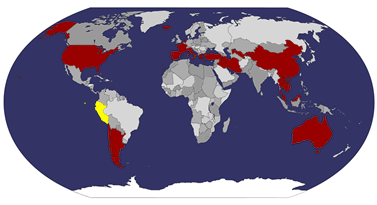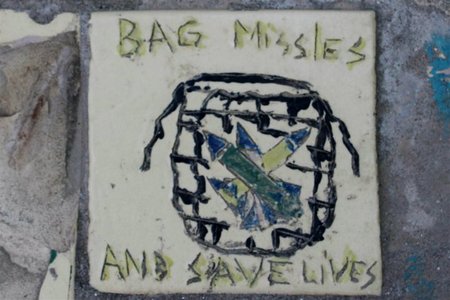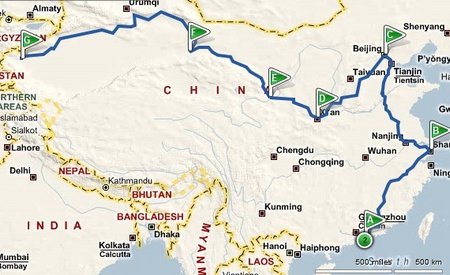We traveled for a year and now we’re home. Our project is completed. Now I feel comfortable to write about logistics and comment on what worked (or didn’t) as a reference for anyone else out there planning to do an around the world trip with or without children.
Planning A Round World Trip
We actively planned our trip for about a year prior to leaving. Determining our itinerary was the most important decision we made during this time. At the beginning, a year seems such a long time, you think you can go everywhere and see everything but then just by looking at simple numbers, 263 countries in the world for example, you realize that you have to make choices.
Once we had an itinerary we researched the countries we planned to visit but not exhaustively. We’re lazy travelers like that, we like to learn as we go. When leaving Seattle we had booked a couple of flights, a hostel for the first night, a house on the beach in Ecuador for ten days (to get over the shock of what we’d just done) and the Inca Trail – this last because you must book ahead with an approved tour company.
Once on the road we booked what we needed as we needed it. We did try to follow the old-style “true” (for Murph) backpacking method of finding accommodation when we arrived somewhere. However, there are too many backpackers booking ahead via cell phone or internet now which means that in popular destinations travelers arriving without bookings can find themselves in really crappy digs. Even I have my limits.
What follows is more detail on the how for accommodation, transportation and food, broken down by region because what we did varied considerably between say, South America and Central Asia.
Backpacking Accommodation
Before we left home we found our first hostel on HostelBookers.com and cross-checked the information for the same hostel on HostelWorld.com and on TripAdvisor.com. This became our default method of finding places to stay in South America. We did look at the recommendations in our Lonely Planet guidebook for initial suggestions but honestly, the online reviews were better and more reliable. Ditto for South-East Asia.
China was different (no surprise in that!). Things are changing so fast in China that our (2009) guidebook was useless for everything except history. We found YHAChina the best resource for finding quality budget accommodation. We also used Agoda.com a couple of times – for a hotel in Macau, for example. For the record, in Hong Kong we stayed at the Chungking Mansions (described as the ‘Ghetto at the Center of the World’ by the Economist) and we found it clean and comfortable. Just saying so you know where my standards are.
We stayed mostly in home-stay accommodation in Kyrgyzstan, hostels in Uzbekistan and hotels in Iran usually found using recommendations from other travelers. Budget accommodation is scarce in Iran but we did find some gems such as the Silk Road Hotel in Yazd and Niayesh Hotel in Shiraz.
Other backpackers were a vital source of information everywhere we traveled and we swapped, shared and learned about places to eat, stay and visit from them in every country.
Street Food
We ate as cheaply as we could everywhere we went – mostly. (We did treat ourselves occasionlly). Wherever possible we chose accommodation where breakfast was included in the price of the bed or room. In South America we ate a lot of in-your-hand empanadas for lunch and self-catered in hostel kitchens in the evening. In South-East Asia you can eat like a king all day long from the food carts that set up along the streets in any town. In China, Uzbekistan and Iran we found little restaurants for lunch and dinner. We didn’t go out of our way looking for “authentic” but a busy clientele of local diners and an incomprehensible (i.e. not in English) menu were good indicators that the food was cheap and good. In Kyrgyzstan our home-stay hosts fattened us up like Christmas geese.
One of our favorite food memories is of a little restaurant in Hanoi, Vietnam. At a glance, the large Lonely Planet logo on the sign outside the restaurant made us think that this was an LP recommendation. Then one of the boys noticed that the text above the logo said: “Should be recommended by…”. We felt such brazenness deserved our custom (and the food was good too).
Buses, Trains, Planes, Automobiles and Ferries
Yep, we tried them all. It is unbelievably easy to travel by bus in South America. Easy, convenient and cheap. There’s always the cheap bus, but in Chile, Argentina and Peru, you can pay more – not much more – and ride luxury buses between major cities.
Transportation was most frustrating in South-East Asia. It’s a continual battle between you and the plentiful scam artists touting luxury buses which are really over-loaded, under-air-conditioned jalopies one bend in the road away from a crash. Midget-sized beds on night buses was another personal favorite. The train in Vietnam was a relaxing treat. (You need to book early to have a hope of getting a spot).
When I was planning our itinerary through China I thought we could rely on the train. That turned out to be (a) difficult and (b) not efficient. In such a vast country, it’s hardly surprising that we ended up using every mode of transport except donkeys and ferries.
CBT Kyrgyzstan provided us with a driver which was good because there really are only two decent roads in that entire country. You need nerves of steel – gained by say, having served in the Soviet Army in Siberia like our guide/driver Anatoly – to drive in Kyrgyzstan.
We took the train in Uzbekistan. They have fancy new trains but only between Tashkent and Samarkand. For everywhere else there’s old, clunky, no air-con rolling stock but the beds are massive compared to China. In Iran we wanted to take the train but, since train travel seems to be pretty popular with the Iranians, we were out of luck – there were no seats available on any route for the entire time we were in the country! Thankfully there are plenty of buses, budget to luxury depending on how much you want to spend, running between all cities.
In general, we booked trains and planes (in China) two to three days ahead of when we needed them. With most buses we just turned up at the bus station and took the next bus heading in the direction we wanted to go. The only time this didn’t work was in Portugal at the end of the trip but then we were with Murph’s sister who kindly gave us a ride to the next town – where we got a ferry across the river into Spain and a bus on to Seville. Easy Peasy.
Related Posts
Family World Trip Logistics Part I: What We Left At Home
Family World Trip Logistics Part II: Insurance and Medical
Family World Trip Logistics Part III: Schoolwork
Family World Trip Logistics Part IV: Travel Planning and Booking
Like what you’ve read and interested in reading more? Subscribe to the WanderMom feed using rss or email , follow me on Twitter or become a fan on Facebook.

 In Progress
In Progress  Not Yet Started
Not Yet Started 


































